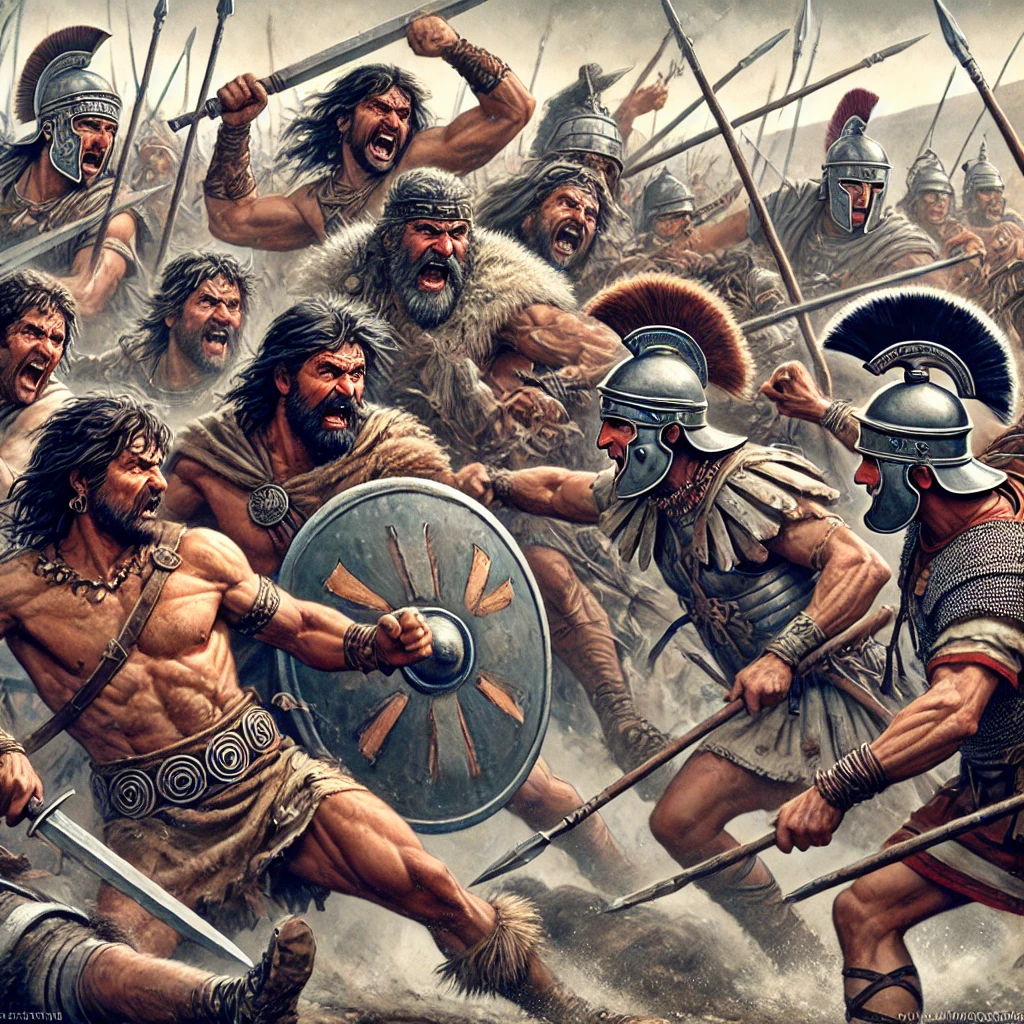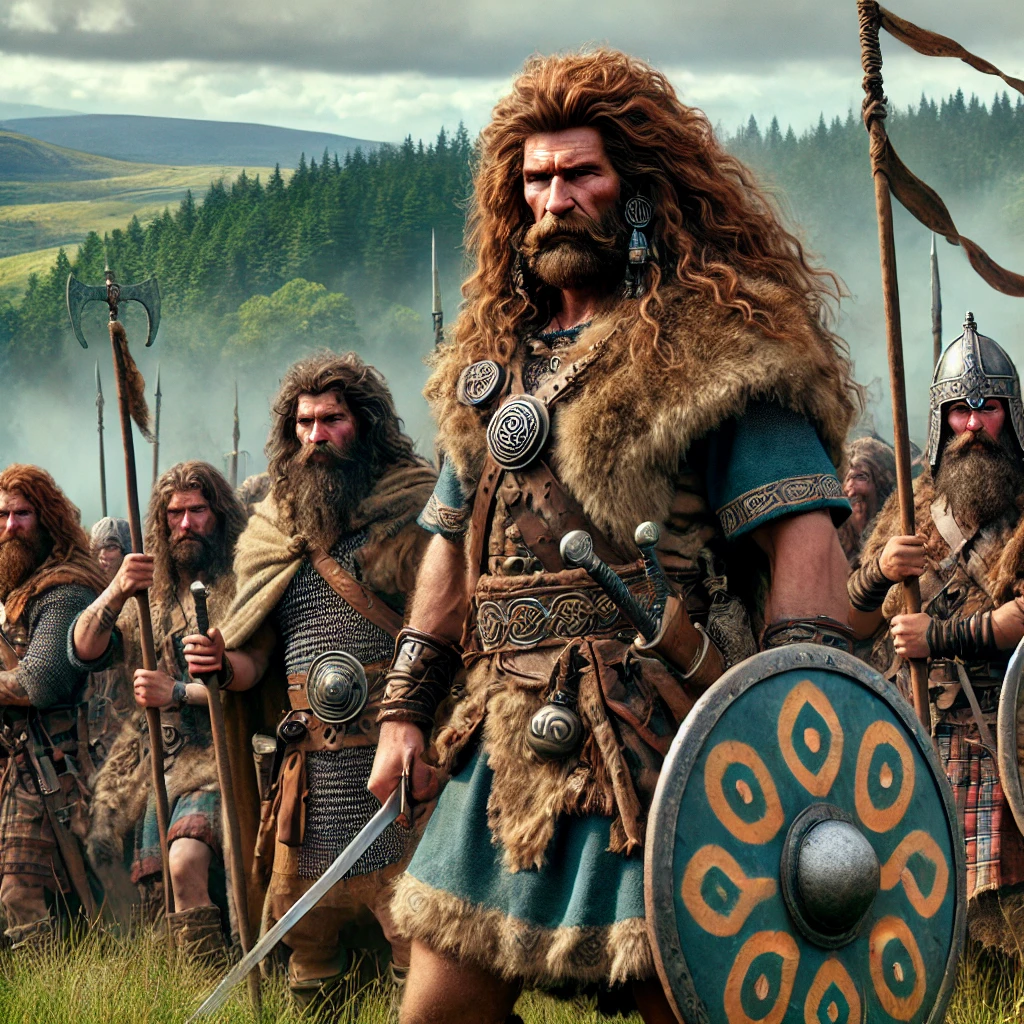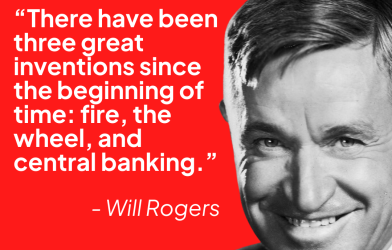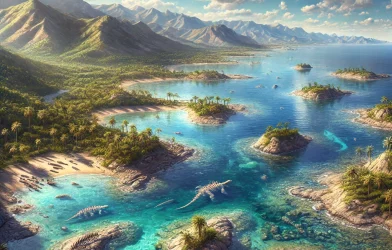Gallia, known to the Romans as Gaul, was a vast region of Western Europe that included present-day France, Luxembourg, Belgium, most of Switzerland, and parts of Italy, the Netherlands, and Germany. This territory was home to the Gauls, a collection of Celtic tribes with distinct cultures, languages, and traditions. Gallia’s history is a fascinating tale of cultural richness, military conquests, and the eventual integration into the Roman Empire, leaving a legacy that continues to influence Europe today.
Gallia was not a unified nation but rather a mosaic of tribes, each with its own identity. The Gauls were fierce warriors, known for their bravery and prowess in battle, but they were also skilled farmers, artisans, and traders. Their society was organized into tribes led by chieftains, and they practiced a form of druidism, with the druids serving as religious leaders, legal authorities, and educators.
Traditions and Culture of Gallia
Gallia’s rich cultural heritage was deeply rooted in the traditions of the Celtic tribes that inhabited the region. The Gauls were known for their vibrant oral traditions, passed down through generations by bards and druids. These traditions included epic tales of heroism, intricate religious rituals, and a strong connection to nature, reflecting the values and beliefs of the Gallic people.
Religion played a central role in Gallic society, with the druids acting as the spiritual leaders, legal authorities, and educators. Highly respected, druids held significant power and often mediated between tribes. They conducted religious ceremonies, including sacrifices to appease the gods and ensure the prosperity of their people. The Gauls believed in a pantheon of gods and goddesses, each associated with natural elements and aspects of daily life. Sacred groves and natural sites, such as rivers and forests, were considered holy places where druids performed their rituals.
The Gauls were skilled artisans, known for their intricate metalwork, pottery, and textiles. They crafted beautiful jewelry, weapons, and armor, often adorned with elaborate designs reflecting their artistic traditions. Celtic knots, spirals, and animal motifs were common in Gallic art, symbolizing the interconnectedness of life and the natural world. The Gauls’ craftsmanship was highly regarded, and their products were traded across Europe, contributing to the region’s prosperity.
Gallic society was organized hierarchically, with chieftains at the top, followed by warriors, farmers, and artisans. Chieftains, often selected from noble families, held the most power and led their tribes in war and peace. The warrior class was highly esteemed, with bravery in battle being one of the most valued virtues. However, the majority of the population were farmers who cultivated the land, raised livestock, and provided sustenance for the tribe’s survival.
The Gauls lived in fortified settlements known as oppida, which served as centers of trade, administration, and defense. These settlements were strategically located on hilltops or near rivers, providing both security and access to resources. Within these communities, the Gauls maintained a strong sense of identity and tradition, celebrating seasonal festivals, such as Samhain and Beltane, marking the changing of the seasons and the cycles of nature.
The turning point in Gallia’s history came in the 1st century BC when Julius Caesar launched his campaign to conquer the region. The Gallic Wars, lasting from 58 BC to 50 BC, saw Caesar systematically subdue the various tribes of Gallia. The conquest was marked by brutal battles, such as the Siege of Alesia, where the famous Gallic leader Vercingetorix was captured. Despite fierce resistance, the Roman legions prevailed, and Gallia was incorporated into the Roman Empire as the province of Gaul.

Following the Roman conquest, Gallia underwent a process of Romanization. The Romans introduced their language, laws, and infrastructure, transforming the Gallic landscape. Roman roads crisscrossed the region, facilitating trade and communication. Cities like Lugdunum (modern-day Lyon) and Lutetia (modern-day Paris) flourished as centers of Roman culture and administration. The Gauls adopted many aspects of Roman life, including the Latin language, which eventually evolved into the French language spoken today.
Several key factors influenced the development and eventual transformation of Gallia:
- Geography and Trade: Gallia’s location at the crossroads of Europe made it a hub of trade and cultural exchange. The region’s rivers, such as the Seine, Rhône, and Loire, facilitated trade routes connecting Gallia with other parts of Europe, including the Mediterranean world. This geographic advantage allowed Gallia to prosper economically and culturally, even before the arrival of the Romans.
- Military Tradition: The Gauls were renowned for their warrior culture, with a strong emphasis on honor, courage, and loyalty. This military tradition not only shaped their society but also made them formidable opponents for the Roman legions. The Gallic Wars, particularly the leadership of Vercingetorix, highlighted the Gauls’ resilience and strategic acumen, even in the face of overwhelming odds.
- Roman Influence: The Roman conquest brought significant changes to Gallia, introducing new technologies, governance, and cultural practices. The construction of roads, aqueducts, and cities transformed the Gallic landscape, while the adoption of Latin and Roman law facilitated Gallia’s integration into the Roman Empire. Despite the Romanization, the Gauls retained elements of their Celtic heritage, blending them with Roman customs to create a unique cultural identity.
- Cultural Exchange: Throughout its history, Gallia was a melting pot of different cultures, including Celtic, Roman, and even Greek influences. This cultural exchange enriched Gallic society, leading to the development of new art forms, religious practices, and social customs. The fusion of these diverse influences contributed to the vibrant and dynamic culture that characterized Gallia.
The legacy of Gallia is still evident in modern Europe. The region’s history has left an indelible mark on the cultural and linguistic landscape of France and its neighbors. The name “Gaul” lives on in the French language, where “Gaulois” refers to something distinctly French. The story of Vercingetorix and the Gallic resistance against Rome is celebrated as a symbol of French national pride and identity.
Moreover, Gallia’s influence extended beyond the borders of France. The spread of Roman culture and the Latin language across Europe can be traced back to the Romanization of Gallia. This legacy laid the foundation for the development of Romance languages, including French, Italian, Spanish, Portuguese, and Romanian.
Gallia’s history is a testament to the resilience and adaptability of the Celtic tribes that once called it home. From a land of independent tribes to a key province of the Roman Empire, Gallia’s journey shaped the course of European history. The traditions, culture, and key factors that influenced Gallia have left an enduring impact, with the legacy of Gallia still visible in the languages, cultures, and traditions of Europe today.














